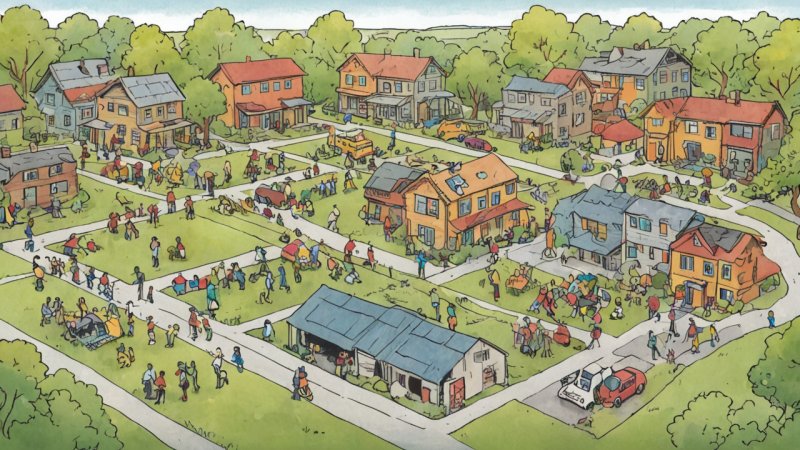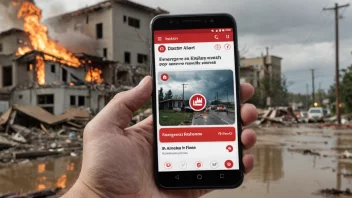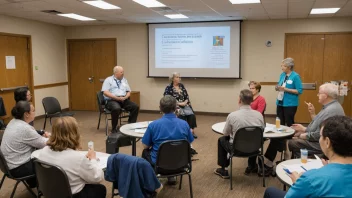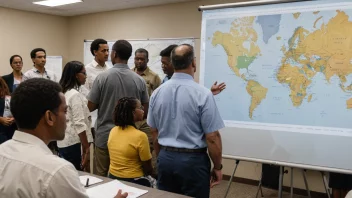In an era marked by rapid change and increasing challenges, the importance of building resilient communities cannot be overstated. Resilience is not merely the ability to bounce back from adversity; it encompasses the capacity to adapt, thrive, and innovate in the face of difficulties. Whether dealing with natural disasters, economic downturns, or social upheavals, communities that are resilient can better withstand shocks and foster an environment where all individuals can flourish. This article explores various strategies that can empower communities to build resilience and offers insights into how individuals can actively engage in this vital effort.
Understanding Community Resilience
Community resilience refers to the ability of a community to withstand, adapt to, and recover from various challenges. This resilience emerges from the interplay of social connections, economic stability, infrastructure, and environmental sustainability. By understanding the unique characteristics of their community, residents can identify strengths and weaknesses, paving the way for targeted actions that enhance resilience.
Fostering Strong Social Networks
One of the foundational elements of resilient communities is strong social networks. These networks are built on trust, mutual support, and collaboration. When individuals know their neighbors and engage in community activities, they create a web of relationships that can provide assistance in times of need. Initiatives aimed at fostering social connections can include:
- Community Events: Organizing local festivals, potlucks, or cultural events can help residents connect with one another.
- Support Groups: Establishing groups focused on specific issues, such as mental health or parenting, can provide emotional and practical support.
- Volunteer Opportunities: Creating avenues for community members to volunteer can strengthen their bonds while addressing local needs.
Investing in Education and Skill Development
Education is a powerful tool for building resilience. By investing in education and skill development, communities empower individuals to improve their economic circumstances and contribute positively to society. Strategies for enhancing education include:
- After-School Programs: Facilitating programs that provide tutoring and mentorship can help children succeed academically.
- Workshops and Training: Offering workshops on financial literacy, job readiness, and vocational skills can equip residents with essential tools for economic stability.
- Partnerships with Local Institutions: Collaborating with schools, colleges, and universities can enrich educational opportunities and resources.
Promoting Economic Diversification
Communities that rely heavily on a single industry or economic sector are often more vulnerable to external shocks. Promoting economic diversification can help mitigate these risks. Strategies for fostering economic diversity include:
- Supporting Local Businesses: Encouraging residents to shop locally can strengthen the local economy and create jobs.
- Encouraging Entrepreneurship: Providing resources and support for budding entrepreneurs can lead to innovation and job creation.
- Developing Cooperative Models: Establishing cooperatives can empower community members to work together and share resources.
Enhancing Environmental Sustainability
Environmental sustainability is a critical aspect of community resilience. As climate change brings about more frequent and severe weather events, communities that prioritize environmental stewardship are better equipped to respond. Strategies for enhancing sustainability include:
- Community Gardens: Establishing community gardens can promote food security, foster social connections, and improve local ecosystems.
- Green Infrastructure: Investing in green infrastructure, such as parks and green roofs, can reduce urban heat and provide recreational spaces.
- Educational Campaigns: Raising awareness about sustainable practices can empower residents to make environmentally conscious choices.
Building Effective Communication Systems
Effective communication is vital for community resilience. During crises, timely and accurate information can save lives and facilitate recovery. Communities should prioritize building communication systems that ensure information flows smoothly. Strategies include:
- Establishing Alert Systems: Creating a system for disseminating emergency information can keep residents informed during crises.
- Utilizing Social Media: Leveraging social media platforms can facilitate real-time communication and community engagement.
- Regular Community Meetings: Encouraging open discussions through regular meetings can foster transparency and trust among residents.
Encouraging Civic Engagement
Active participation in civic life is essential for nurturing resilient communities. When individuals feel empowered to voice their opinions and take part in decision-making processes, they contribute to a more vibrant and robust community. Strategies to encourage civic engagement include:
- Voter Education: Providing resources to educate residents about the voting process can enhance civic participation.
- Community Advocacy: Encouraging residents to advocate for local issues can lead to positive change and empowerment.
- Leadership Development Programs: Offering programs that cultivate leadership skills can prepare individuals to take on active roles in their communities.
In conclusion, building resilient communities is a complex but rewarding endeavor that requires the collective efforts of individuals, organizations, and local governments. By fostering strong social networks, investing in education, promoting economic diversification, enhancing environmental sustainability, improving communication, and encouraging civic engagement, communities can create a robust framework to withstand challenges. Each resident has a role to play in this process, and through collaboration and commitment, communities can emerge stronger, more connected, and better equipped to face the future. Together, we can build a world where resilience is not just a goal but a reality for all communities.






